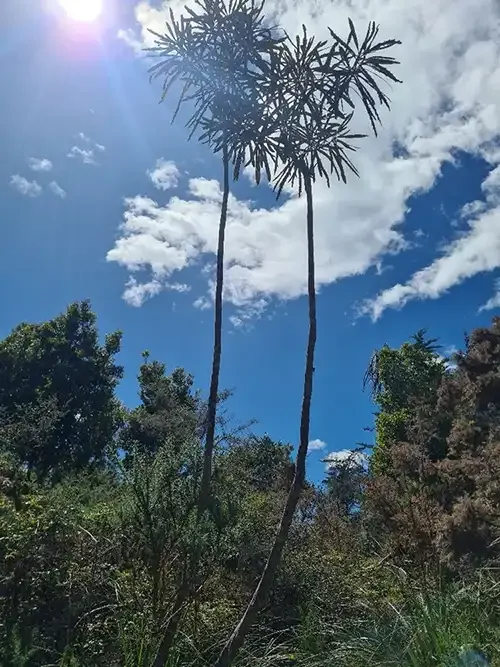Gorse As a Nurse Crop for Native Regeneration
Written by: Aimee Hyland - Nature-Based Solutions Officer, Ekos
In my role as a Nature-Based Solutions Officer here at Ekos one of my core missions is to help landowners discover forest carbon project opportunities on their land. Many people may have pockets of gorse on their property and may not know what could be hiding underneath.
While gorse can be very harmful to landscapes it can also be effective in other ways, in particular when it comes to native reversion carbon projects, read on to learn why.
We have successfully registered reverting native that is under gorse canopy into the Emissions Trading Scheme for many of our clients. Gorse acts as a nurse crop for reverting native. Nurse crops are plants or trees planted before seedlings to support their growth and establishment. They provide shelter from harsh weather, suppress weeds, and guide the seedlings to grow tall rather than spreading out. The gorse acting as a nurse crop provides the environment for reverting native to germinate and grow.
Sulivan et al, 2007 suggests if gorse landscapes are undisturbed by such events as fire or clearing, and there is native seed sources close by, native broadleaved species are able to dominate in approximately 30 years' time. Through successional processes, native forests are able to outcompete gorse and the gorse canopy eventually collapses with age. A paper by Druce (1957) demonstrated that gorse was well established within 10-year-old native scrub, supressed in 34-year-old native scrub and dead in 40-year old native scrub. During my many site visits to reverting native stands at my time at Ekos I have witnessed an abundance of native seedlings growing up through gorse stands.
In order to assess these areas for eligibility in the NZ ETS, a site visit is mandatory. As reverting native beneath gorse in most cases cannot be detected from aerial imagery or drone footage, it is essential to ground-truth the area by a site visit. During the site visit we collect data from systemically allocated waypoints to assess whether the vegetation present meets the forest land definition.
Below you will see some examples of the different stages of native regeneration coming up through gorse. All photographs below are from sites that are now registered in the NZ ETS.
If you have areas on your land that may look like this and are interested in starting a carbon project, we would love to help you get started, please get in touch today by using the contact us form.
References:
Druce, A.P. 1957: Botanical survey of an experimental catchment, Taita, New Zealand. Department of Scientific and Industrial Research Bulletin 124. DSIR, Wellington. 81 p.
Sullivan, J.J.; Williams, P.A.; Timmins, S.M. 2007: Secondary forest succession differs through naturalised gorse and native kānuka near Wellington and Nelson. New Zealand Journal of Ecology 31: 22–38.
Wotton, D. M., & McAlpine, K. G. (2013). Predicting native plant succession through woody weeds in New Zealand. Publishing Team, Department of Conservation.








